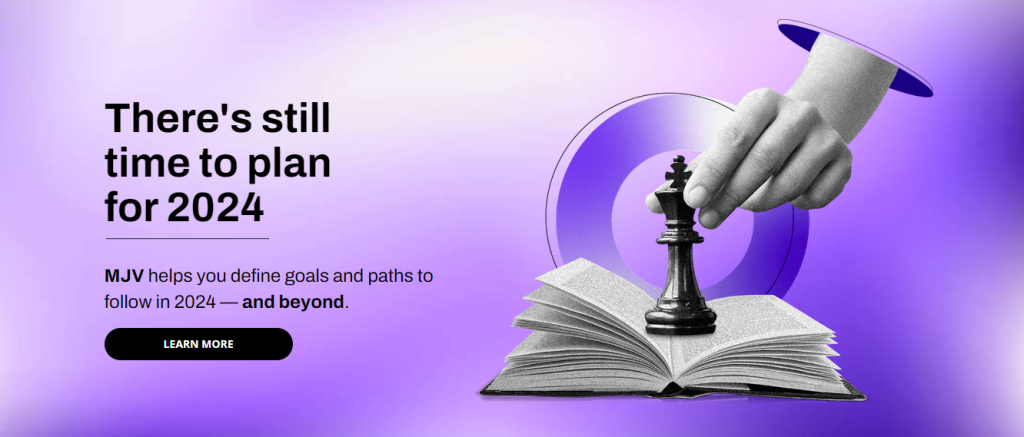Forward Thinking: How To Build a Resilient, Forward-Driven Company
Discover how using future-oriented approaches like Future Design can help you actively build your business for the next 20 years.
It is not known exactly when the term “forward-thinking” was coined, but it dates back to before the 1800s. It would seem, rather appropriately, that we have been looking and thinking towards the future for a very long time.
But what does it mean for business, and why companies should be on the lookout for what’s next? The purpose of this article is not only to answer these questions but also to help you understand exactly why being a future-oriented company is so pertinent to the context we currently find ourselves in.
What does Forward Thinking mean?
A forward-thinking company mindset is characterized primarily as a proactive mindset, in contrast to a reactive approach. Individuals embracing this mindset consistently anticipate future developments and plan for potential scenarios meticulously.
We can say that the benefits of being a future-oriented company boil down to two specific factors:
1) BUILD OPERATIONAL AND STRATEGIC RESILIENCE IN THE FACE OF INSTABILITIES
The need to build organizational resilience to protect revenue streams and margins from market uncertainties and even hard-to-predict events such as economic crashes, wars, pandemics and extreme weather events.
2) CREATING COMPETITIVE ADVANTAGE BY ANTICIPATING EMERGING CONTEXT THAT LIE AHEAD
The ability to identify signs of change in order to act in advance by creating scenarios of possible futures based on specific variables and planning actions to influence the direction of events.
Forward Thinking as a Risk Management Strategy
If we had to name organizations’ no. 1 concern, we would say uncertainty. Uncertainty is what drives the widespread business obsession with risk management. And don’t get us wrong—this is the best way to prepare your organization to better navigate disruptive storms—and they always come.
Take AI, for example, which is poised to be one of the biggest game-changers ever in business. There’s no way out: from now on, planning for AI is planning for the future.
The good news is that while forward-thinking empowers companies against future uncertainties, it can also be used as a form of risk management.
This is particularly crucial for companies today who find themselves in a BANI world. If you’re unfamiliar with the term, we have an excellent article that covers this topic. Check it out by clicking the link below!

The Role of Ambidexterity In a Forward-Thinking Company
Navigating future risks and challenges requires more than just adaptability—it demands a strategic approach that the business world recently started calling “ambidexterity.”
The concept of business ambidexterity (or organizational ambidexterity) encompasses two key features: exploration and exploitation.
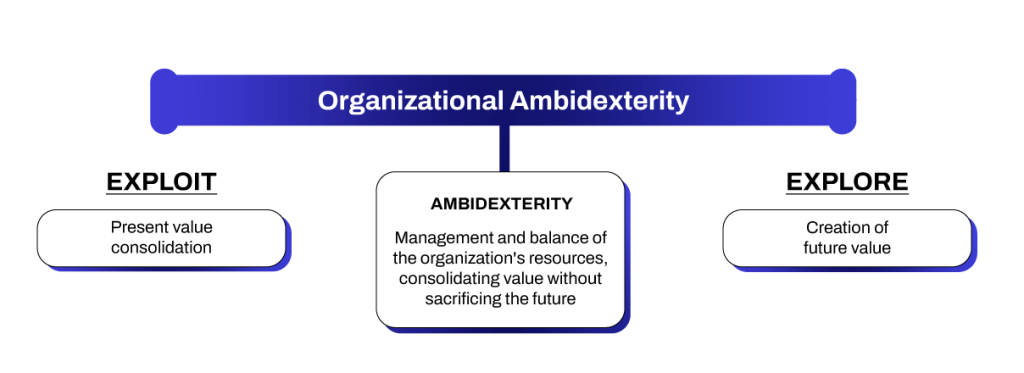
Organizational ambidexterity prioritizes understanding how companies can proactively anticipate industry shifts and technological advancements and take advantage of trend forecasting to build lasting business strategies.
It’s about walking a fine line between business stability, with an environment of present value consolidation; and a branch of experimentation, where risk-taking is embraced to create what’s next—for customers and the business itself. All at the same time.
Finding the right balance between these two pillars is the key to cultivating a solid organization in the short, medium, and long term.
Present-Oriented vs. Future-Oriented Strategic Innovation
When we mention things like forward-thinking and organizational ambidexterity, what we are essentially talking about is strategic innovation. Within this realm, there are two general trains of thought: present-oriented and future-oriented strategies, each with its own trinity of focus.
These concepts were originally detailed in a book written by Clayton M. Christensen and Mark W. Johnson, titled: “Lead From The Future: How To Turn Visionary Thinking Into Breakthrough Growth.” In the book, Christensen and Johnson label these approaches as “present-forward” and “future-back.”
The present-oriented trinity of focus is:
• Desirability: What solutions make sense to and for people?
• Feasibility: What is technically feasible to achieve within the foreseeable future?
• Viability: What strategies can become part of a sustainable business model?
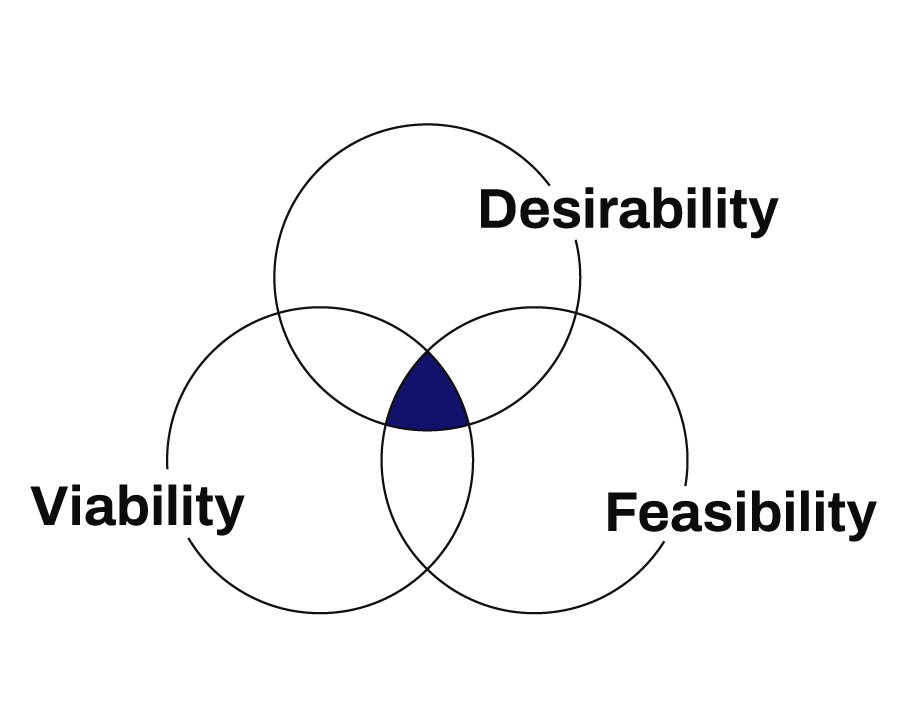
The present-oriented trinity builds itself starting from the company’s present state and identifying ways to construct the future brick by brick, using what is already in hand. This form of strategic innovation is incremental in nature and takes advantage of what already works.
The future-oriented trinity of focus is:
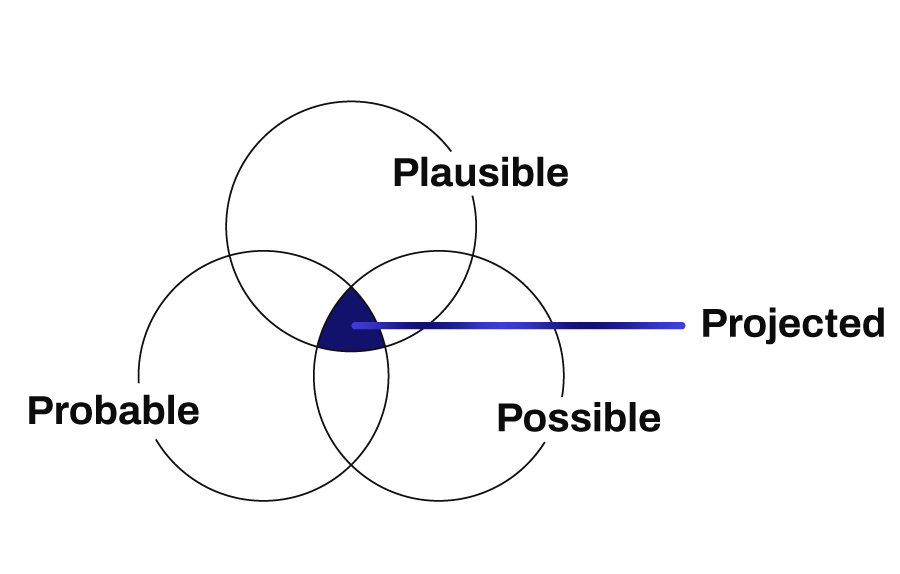
• Possibility: What technologies are possible to exist in the near and long-term future?
• Plausibility: What is likely to happen in terms of advancements and trends?
• Probable: How will consumer behavior change in the future?
In contrast to a present-oriented vision, this methodology works in a future-oriented format, starting from the future and imagining what it might hold, as well as the goals the company wants to achieve. This form of strategic innovation will also implement strategies in the present but uses a form of reverse engineering to determine what needs to be done now to reach where you want to be.
Discover the Design Futures Framework
There is no way to predict the future. However, some forward-thinking methodologies exist to anticipate changes and actively prepare for what’s coming. One of the most efficient approaches to do so is called Futures Design.
This method also goes by another name, “speculative design,” which was popularized by Anthony Dunne and Fiona Raby. They define speculative design as follows:
“An activity where conjecture is as good as knowledge, where futuristic and alternative scenarios convey ideas, and where the goal is to emphasize implications of “mindless” decisions for mankind.” Anthony Dunneand Fiona Raby
The concept focuses tremendously on avoiding that last part, “mindless decisions.” The idea is that all design aspects should be constructed in much the same way buildings are. Designing Futures seeks to answer the following questions:
→ How long will these models and structures last?
→ How will changes in behavior and technology affect our design choices now?
→ What can we do to ensure that the strategies we implement today are still viable tomorrow?
Here’s how Futures Design can help you build competitive advantage:
→ Anticipate opportunities and challenges
→ Visualize impact and possibilities
→ Build resilience and competitive advantage
→ Measure maturity and stress strategies
→ Inform strategic planning and decision-making
Challenges Addressed By Futures Design
While the concept of design futures seems sound, it’s good to keep in mind the most impactful benefits that this forward-thinking methodology can have on your business as a whole:
→ More accurate risk calculation and mitigation
→ Improved antifragility of strategies
→ More adherent long-term solutions
→ Preferable positioning in the face of disruption
→ Accessibility to cutting-edge innovation opportunities
Build a Future Vision With MJV
We at MJV believe that it’s important to have a vision for the future and keep up with both present-forward and future-back approaches in order to truly thrive.
We believe it’s so important that we’ve created our very own Future Vision Framework. We use a combination of different forward-thinking methodologies to make sure that your company is as prepared as possible for the challenges that lie ahead.
It includes several strategies that are designed with your future in mind. Take a look at some of the methodologies we use:

Trend-hunting
→ Qualitative research into future signals in sources such as news, industry reports, innovative product cases, services and experiences, benchmarking, expert opinions, and ethnography.
→ Sensemaking and identification of trends.
→ Workshops based on current context and possible impacts on the business.
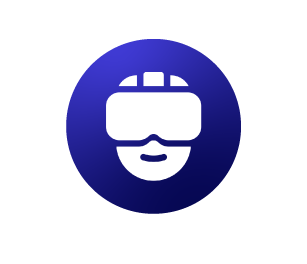

Long-Term Strategic Planning
→ Mapping trends and building future scenarios to identify long-term risks and opportunities.
→ Workshops to co-create a vision of the future and design a strategic roadmap with initiatives that position the company at the forefront of change.
→ Construction of business model drivers, products, and services that guide the subsequent ideation and prototyping of new solutions.
Creating Your Future Service Portfolio
→ Trend mapping and immersion-focused workshop to identify new value propositions.
→ Workshops for co-creating products, services, and/or adapted business models, along with the development of a pipeline of initiatives.
→ Prototyping products or services to capture impressions and refine concepts.


Tailored Offer
If your business has a challenge that requires an investigation into future uncertainties, risks, and opportunities in order to design solutions that put you ahead of changes, count on us.
MJV’s Original Strategic Planning Framework
As you’ve read in this article, building a forward-thinking company isn’t exactly unconventional, but it does require a change in culture and mindset.
When it comes to focusing on long-term goals, we here at MJV know that it can be difficult to step away from day-to-day operations. We find that the most successful forward-thinking strategies are those that balance present needs with future vision.
That’s why we came up with our Strategic Planning Offer. It balances the optimization of current operations with the innovation necessary to set up future success. If you’re interested in getting to know more about how MJV can help your company prepare for the future, you can get more information about our forward-thinking strategies here.
No matter what you have planned for your company’s future, know that you don’t have to go it alone. Go far with MJV. We are people transforming business.

